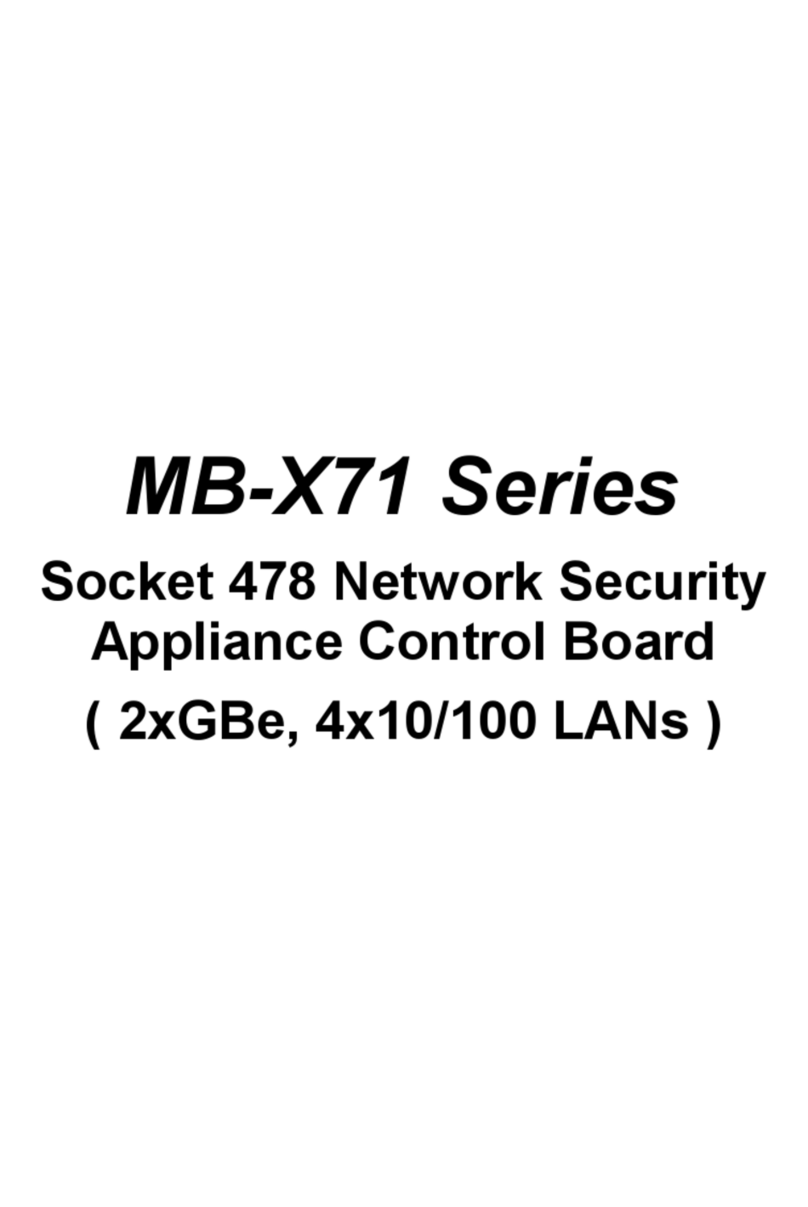
~1~
CHAPTER 1. INTRODUCTION
The new TEM-370B Series embedded SBC is highly configurable with multiple features to
suit different types of commercial and industrial needs. Three Ethernet capability of the
TEM-370B Series gives network administrators here tool to deal with today's changing
application needs. The board that comes with the top-of-the-line Intel 82559 LAN chips,
could act as a firewall between the internet and a company's internal network. This applies
to Web (HTTP) servers, FTP servers, SMTP (e-mail) servers or DNS servers. The
TEM-370B can also be used for an internet-network gateway that connects a number of
local networks. Once again, the three Ethernet capability and processing power of the
TEM-370B Series gives it the ability to perform these functions.
The new TEM-370B Series is designed with IntelÒ815E chipset ; one 168-DIMM socket
support up to 512MB SDRAM and one DiskOnChip socket support up to 288MB flash
memory disk which provide full functionality and performance to be used "exactly" where
you need it. TEM-370B also features high performance VGA display that support
resolutions and color depths up to 1600x1200 x256 color at 85Hz , with VGA 2 x 6 x
2.54mm pin header with housing .
TEM-370B can be expanded with one PCI riser card, other additional devices are
connected though one FDD interface support up to two floppy devices ; one IrDA interface ;
two PCI/IDE ports that support up to four IDE devices and Ultra ATA/100/66/33 interface
helps designers and integrators improve system performance by retrieving and sending
data faster.
In addition, it is also equipped with two RS-232 serial ports; four USB ports; one
multi-mode parallel port which supports SPP, ECP and EPP modes. It provides more
flexible functions to satisfy all users' different application requirements.
Further more the TEM-370B also offers several industrial features such as a 16 -level
time-out intervals watchdog timer and health monitoring hardware. The health monitoring
IC keeps an eye on the CPU and releases an audio alarm when abnormal operating
voltage & temperature or malfunction of the cooling fans is detected . And with its industrial
grade reliability, the TEM-370B can operate continuously at temperatures up to 60° C
(140° F). All these numerous features provide an ideal solution for commercial and
industrial applications where stability and reliability are essential.




























